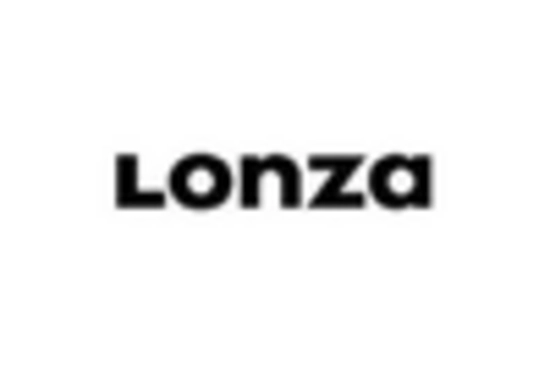Rising Prevalence of Genetic Disorders
The increasing incidence of genetic disorders is a pivotal driver for the Lentiviral Vector Contract Development Manufacturing Organization Market. As the understanding of genetic diseases expands, the demand for innovative therapies rises. This trend is evidenced by the growing number of gene therapy clinical trials, which have surged to over 1,000 in recent years. The need for effective treatment options for conditions such as hemophilia and muscular dystrophy propels the market forward. Consequently, contract development and manufacturing organizations are positioned to meet this demand by providing specialized lentiviral vector production services. The market is projected to grow significantly, with estimates suggesting a compound annual growth rate of over 20% in the coming years, driven by the urgent need for advanced therapeutic solutions.
Expansion of Biopharmaceutical Companies
The proliferation of biopharmaceutical companies is a crucial factor influencing the Lentiviral Vector Contract Development Manufacturing Organization Market. As more companies enter the biopharmaceutical space, the demand for specialized manufacturing services increases. This trend is particularly evident in the rise of small to mid-sized biotech firms, which often lack in-house capabilities for vector production. The market for lentiviral vectors is expected to expand, with a projected valuation reaching several billion dollars by 2027. This growth is largely attributed to the increasing number of partnerships between biopharmaceutical companies and contract manufacturing organizations, which facilitate the development of novel gene therapies. The collaboration allows for the efficient scaling of production processes, thereby enhancing the overall capacity of the market.
Regulatory Support for Gene Therapy Approvals
Regulatory support for gene therapy approvals is emerging as a vital driver for the Lentiviral Vector Contract Development Manufacturing Organization Market. Regulatory agencies are increasingly streamlining the approval processes for gene therapies, which encourages innovation and expedites market entry. This supportive environment is evident in the introduction of expedited pathways for gene therapy products, which has led to a rise in approved therapies. The number of gene therapies receiving regulatory approval has increased significantly, with several products entering the market in recent years. This trend not only boosts the confidence of investors but also stimulates demand for lentiviral vectors, as manufacturers seek to meet the needs of approved therapies. The favorable regulatory landscape is likely to continue driving growth in the market.
Advancements in Vector Engineering Technologies
Technological advancements in vector engineering are significantly shaping the Lentiviral Vector Contract Development Manufacturing Organization Market. Innovations in genome editing technologies, such as CRISPR and TALENs, have enhanced the efficiency and specificity of lentiviral vectors. These advancements enable the development of more effective gene therapies, which are increasingly being adopted in clinical settings. The market is witnessing a shift towards more sophisticated vector designs that improve transduction efficiency and reduce immunogenicity. As a result, contract development organizations are investing in state-of-the-art technologies to remain competitive. The integration of these advanced technologies is likely to drive market growth, with projections indicating a robust increase in demand for lentiviral vectors over the next few years.
Increased Investment in Research and Development
The surge in investment in research and development is a significant driver for the Lentiviral Vector Contract Development Manufacturing Organization Market. Pharmaceutical and biotechnology companies are allocating substantial resources to explore novel gene therapies, which has led to an increase in the number of research initiatives. This trend is reflected in the rising funding for gene therapy projects, with investments reaching billions of dollars annually. The focus on developing targeted therapies for various diseases, including cancer and rare genetic disorders, is propelling the demand for lentiviral vectors. As R&D efforts intensify, contract manufacturing organizations are poised to play a critical role in supporting these initiatives by providing the necessary vector production capabilities, thereby fostering market growth.

















Leave a Comment